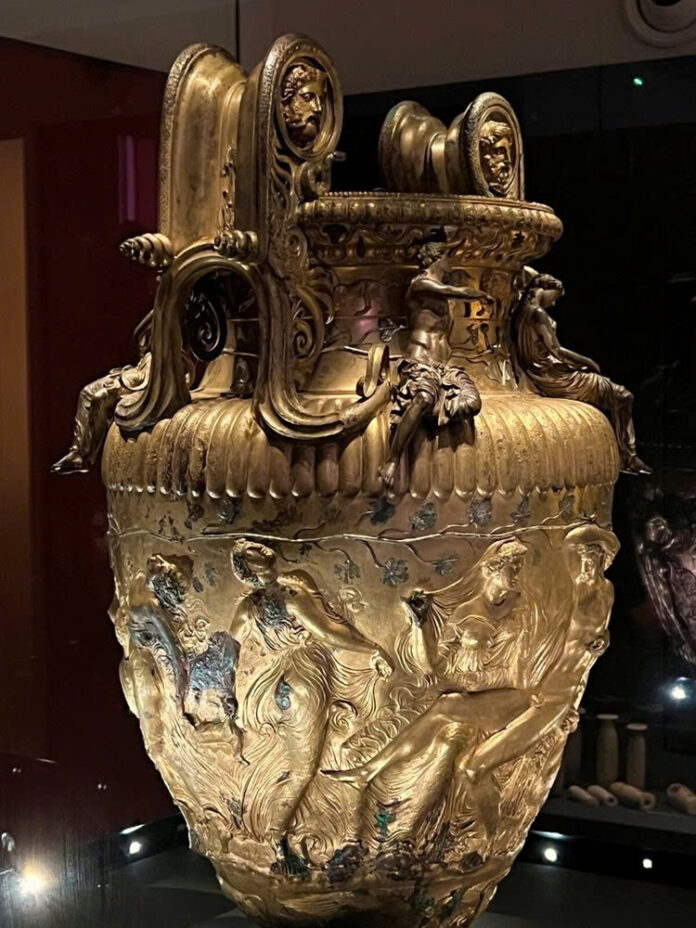Unearthing a Hellenistic Marvel
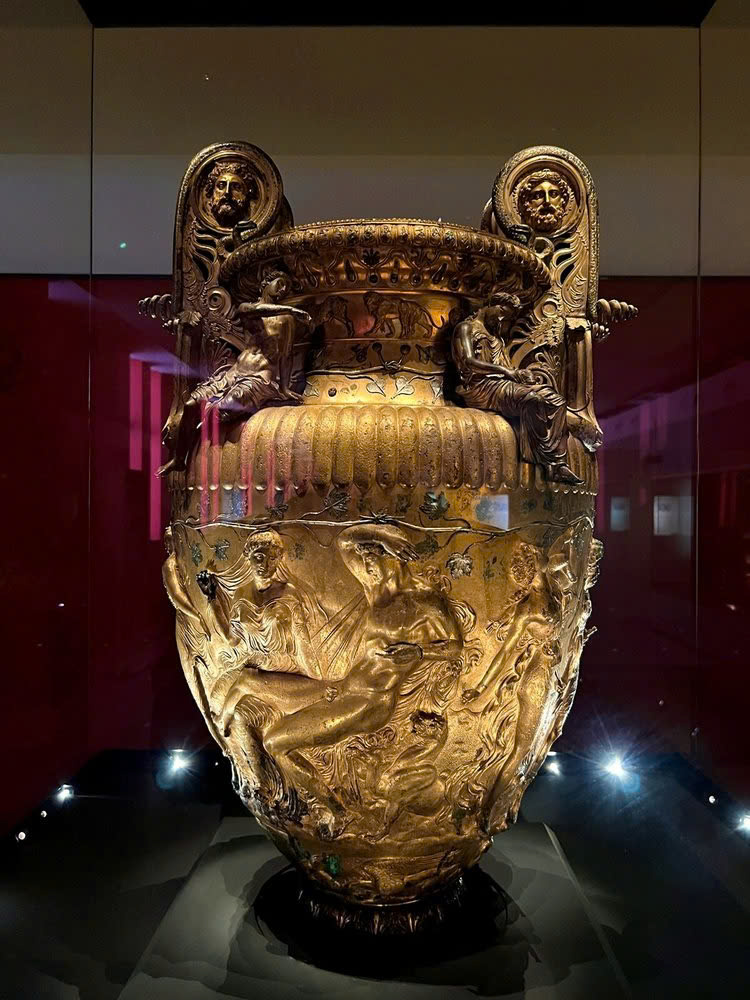
In 1965, archaeologists made a stunning discovery near Thessaloniki, Greece. Hidden within the Derveni Necropolis, they unearthed a magnificent bronze vessel that would come to be known as the Derveni Krater. This masterpiece of Hellenistic craftsmanship, dating back to 330-320 BC, was about to reveal a fascinating story of ancient Greek art, beliefs, and customs.
A Golden Illusion in Bronze
Craftsmanship Beyond Compare
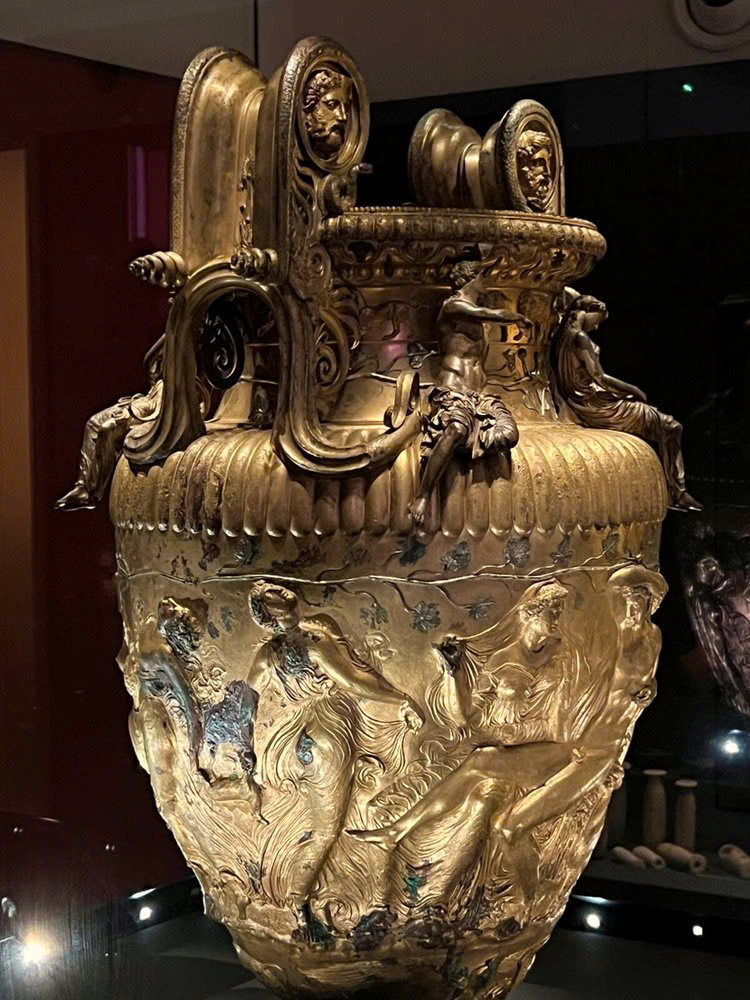
At first glance, the Derveni Krater appears to be made of gold, a testament to the advanced metalworking techniques of its time. In reality, this stunning piece is crafted from high-tin bronze, hammered and cast with exquisite skill. Its construction showcases the pinnacle of Hellenistic artistry, combining hammered sheets with separately cast decorations to create a truly awe-inspiring work.
Divine Imagery: Dionysus and His Revelry

The krater’s main attraction is its elaborate decoration, centered around the god Dionysus and his bride Ariadne. Surrounded by maenads and satyrs in ecstatic celebration, this scene is more than mere ornamentation. It’s a window into ancient Greek beliefs about life, death, and the afterlife.
A Vessel Between Worlds
From Banquet Hall to Eternal Rest
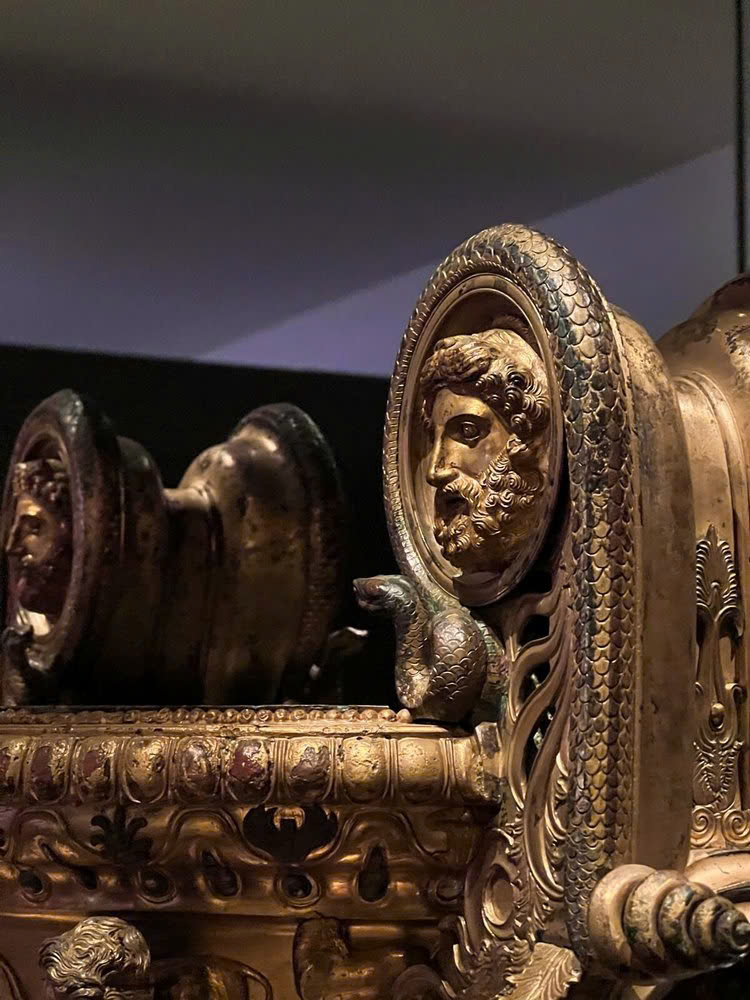
Originally designed for mixing wine at grand banquets, the Derveni Krater found a new purpose in death. Discovered in a tomb, it served as an urn for the ashes of a wealthy aristocrat. This dual role – from celebration of life to guardian of the deceased – perfectly encapsulates the Greek view of death as a transition rather than an end.
Inscribed for Eternity
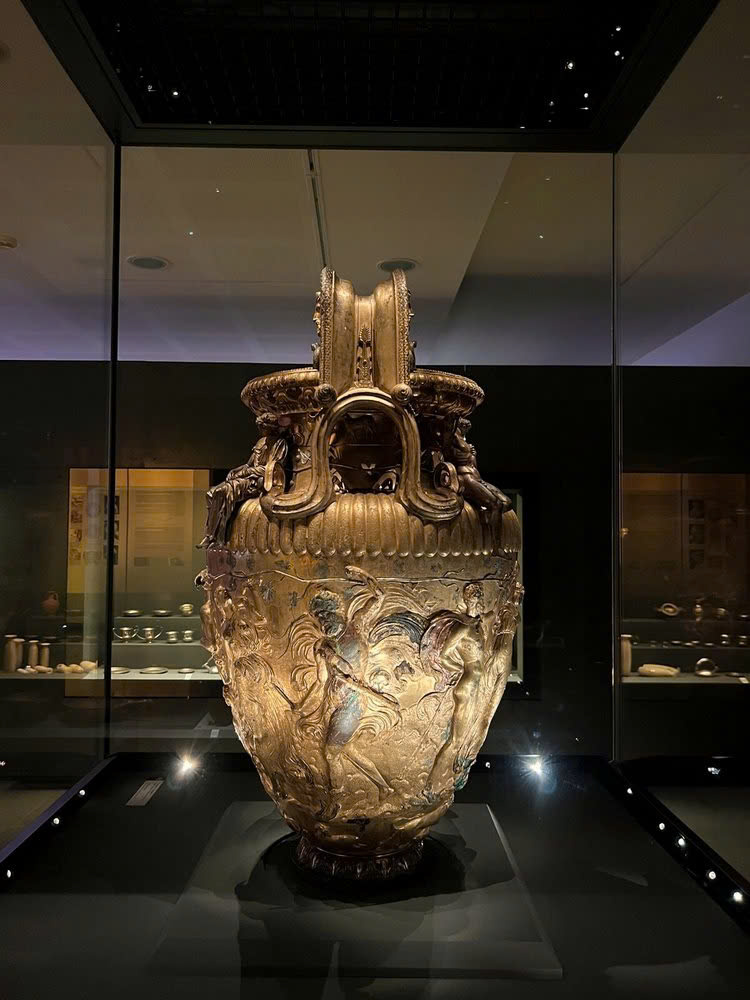
An intriguing silver inscription on the krater’s lip reads “Astiouneios, son of Anaxagoras, from Larissa.” This tantalizing detail offers a rare personal connection to the ancient world, hinting at the social status and beliefs of those who commissioned such luxurious items for their final journey.
Legacy of the Derveni Krater

Today, visitors to the Archaeological Museum of Thessaloniki can marvel at this extraordinary piece of history. The Derveni Krater stands not just as a testament to the technical brilliance of ancient artisans, but as a bridge to a world where art, religion, and the afterlife were intricately interwoven.

In its gleaming surface and intricate designs, we see reflected the hopes, fears, and beliefs of people who lived over two millennia ago. The Derveni Krater reminds us that in the face of mortality, humans have always sought comfort in beauty, ritual, and the promise of something beyond.
